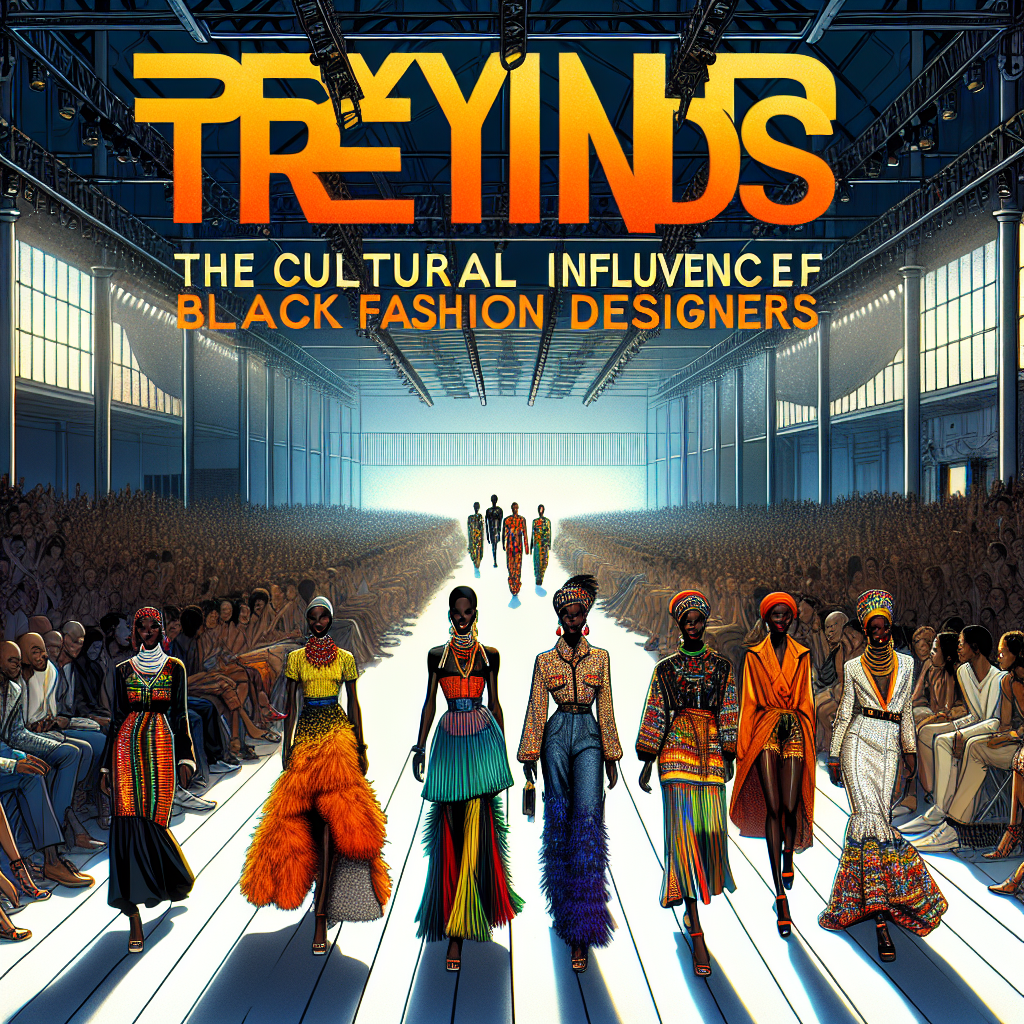Beyond Trends: The Cultural Influence of Black Fashion Designers

Fashion, as an ever-evolving art form, reflects the times and cultures from which it emerges. While the fashion industry has often been criticized for its lack of diversity and inclusivity, Black fashion designers have continuously shaped the narrative, contributing significantly to contemporary style and culture. Their work transcends mere aesthetics, merging history, identity, and socio-political commentary.
Historical Context
The influence of Black designers in fashion is deeply rooted in history. From the African diaspora to the Harlem Renaissance, fashion has served as both a means of self-expression and a vehicle for social change. Figures like Ann Lowe, who designed Jackie Kennedy’s wedding dress in 1953, paved the way for future generations, showcasing the skill and creativity that Black designers bring to the industry.
In the 1970s, the emergence of designers such as Patrick Kelly and Willi Smith marked a pivotal shift. They infused their collections with elements of Black culture, tapping into themes of identity, community, and resilience. Their work challenged prevailing fashion narratives and provided a voice for marginalized communities.
Breaking Barriers
The 21st century has seen a resurgence of interest in Black designers, with a new wave of creatives breaking both barriers and records. Designers like Virgil Abloh, founder of Off-White and the first African American artistic director of Louis Vuitton, introduced streetwear aesthetics to high fashion, bridging the gap between luxury and everyday life. His work resonated with a younger audience, proving that high fashion could be both aspirational and accessible.
Similarly, brands like Pyer Moss, led by Kerby Jean-Raymond, have used fashion as a platform to address social issues, including police brutality and systemic racism. By incorporating powerful narratives into their collections, these designers amplify the voices of their communities, highlighting the intersection of fashion and activism.
Cultural Aesthetics
Black designers draw inspiration from a wealth of cultural aesthetics, traditions, and histories. The bold colors, intricate patterns, and elaborate textiles often seen in their collections reflect a rich heritage. Designers such as Tracy Reese and LaQuan Smith celebrate their cultural origins, incorporating elements like traditional African prints and motifs.
Moreover, the celebration of Black individuality and self-expression is transformative. Designers like Christopher John Rogers and Telfar Clemens have redefined inclusivity by creating pieces that resonate with a diverse audience. Their commitment to body positivity and gender fluidity fosters an environment where everyone feels represented.
The Impact of Social Media
The advent of social media has drastically changed the fashion landscape, providing Black designers with platforms to showcase their work and engage with global audiences. Instagram, TikTok, and other platforms have democratized fashion, allowing designers to bypass traditional gatekeepers.
This shift has enabled niche brands to gain visibility and attract loyal followings. As a result, Black designers have become influential not just in the realm of fashion but also in shaping cultural narratives and trends. The phenomenon of “influencer culture” often sees these designers collaborating with celebrities and influencers, further solidifying their status.
Moving Forward
As the fashion industry continues to evolve, the importance of Black designers cannot be overstated. Their contributions are crucial not just for the representation of Black culture but for the diversification of the fashion landscape as a whole. By championing underrepresented voices, the industry can foster a more inclusive environment that encourages creativity and innovation.
In recent years, initiatives to promote diversity and inclusion have gained traction, yet the industry must remain vigilant. It is essential not just to celebrate Black designers during moments of cultural significance but to integrate their perspectives and talents as an ongoing commitment.
Conclusion
The cultural influence of Black fashion designers extends far beyond trends; it is a powerful commentary on identity, history, and social movements. By recognizing and celebrating the contributions of these designers, we enrich the narrative of fashion itself, ensuring that it remains vibrant, diverse, and reflective of the world in which we live. As we move forward, let us commit to amplifying diverse voices within the industry and acknowledge the profound impact that Black designers have on the fabric of fashion.




